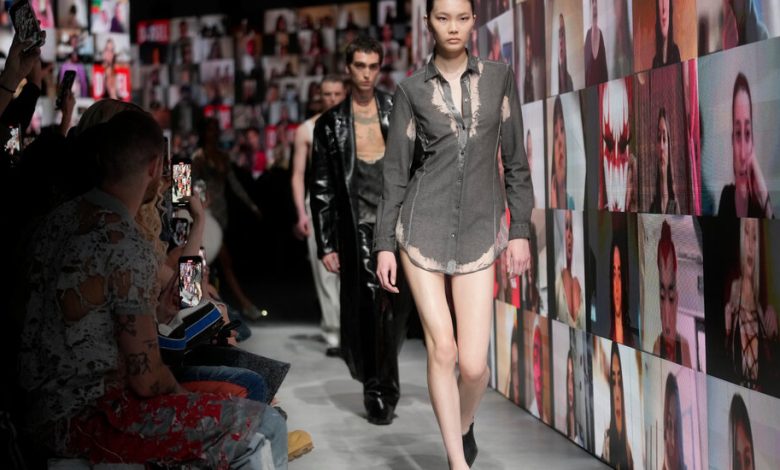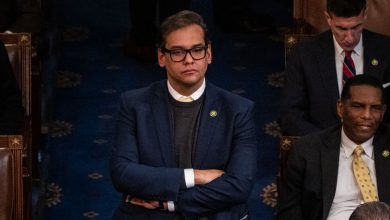Was This the Most Democratic Fashion Show Ever?

Autocracy may be much in the news, and increasingly in vogue depending on the electorate, but as Milan Fashion Week began, democracy was in the air. At least so it was at Diesel where, in a preview, the designer Glenn Martens was touting “transparency without censorship.”
Sounds pointed, but what he meant was tearing down the fourth wall, allowing anyone to access a live feed starting 72 hours before his show to watch the process of creation via cameras trained round-the-clock on the atelier, the casting area, hair and makeup, and so on. Then 1,000 viewers signed up to sit “front row” from home, their faces live-streamed on screens all around the show venue, so as they were watching the audience and the models on the catwalk, the audience and the models were watching back.
So the crowd at the show could see, for example, the viewer who decided to disguise themselves using an alien filter, resembling a creature from “War of the Worlds,” or the viewer who situated her generous cleavage right in the middle of the screen, or the ones who watched with family members, or their dogs. So the show crowd would be reminded, in other words, of the people it was really all about.
Fashion, in essence the most dictatorial of disciplines, where designers traditionally handed down styles like edicts from on high, has been theoretically democratizing for awhile now — ever since it jumped from the salon to the store via ready-to-wear, which changed the barriers to entry from class and caste to pocketbook.
Then came fast fashion, lowering that wall, and then social media opened the door even further, allowing everyone to see a show and pass judgment on it without being dependent on the industry’s power brokers to decide what they knew and when they knew it.
But while designers have thrown their shows open to the public before (Diesel did it last season, when Mr. Martens held a giant rave-as-a-show), and made their audience a part of the experience (see Balenciaga’s red carpet collection), thus far no designer had offered unfettered behind-the-scenes access. There was always a sense that some sort of mystery had to be preserved, some relic of the us-and-them relationship. Not any more.




